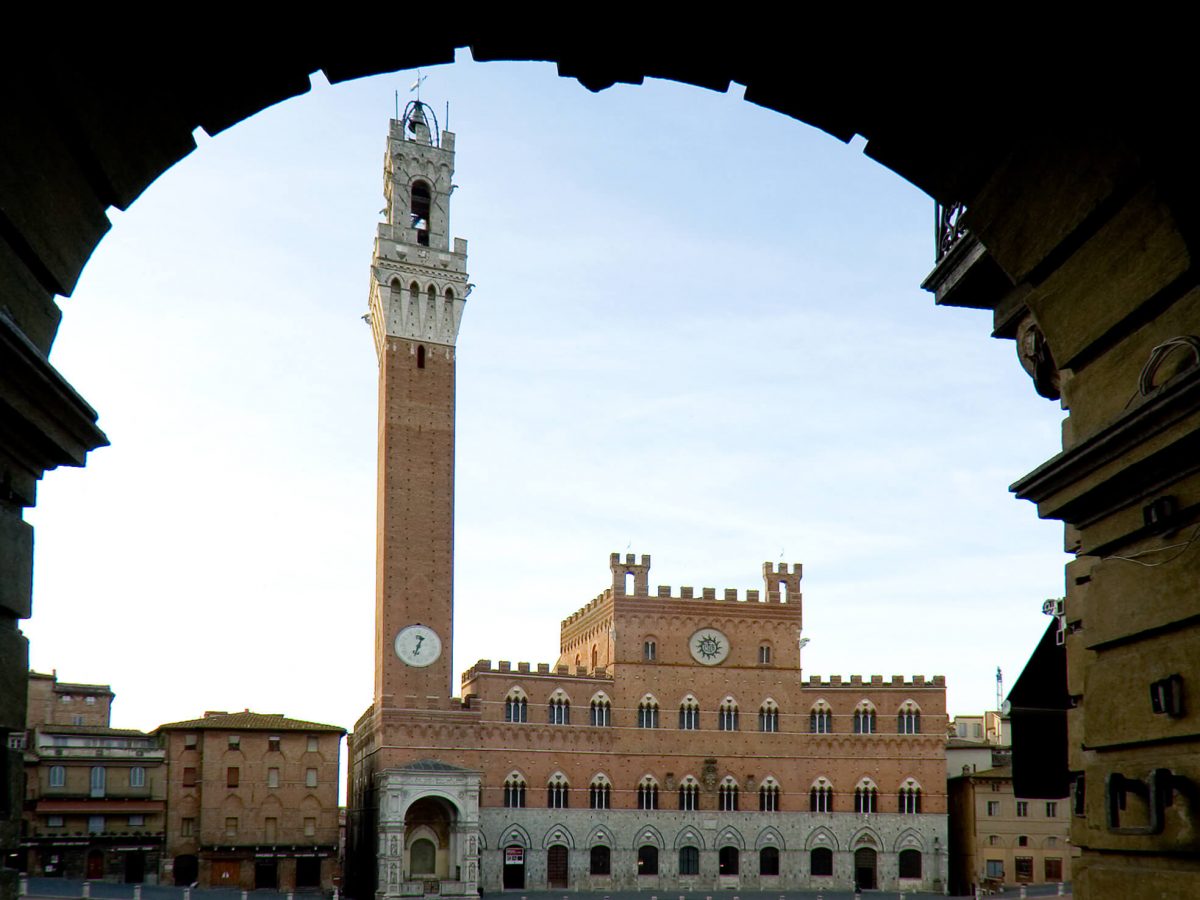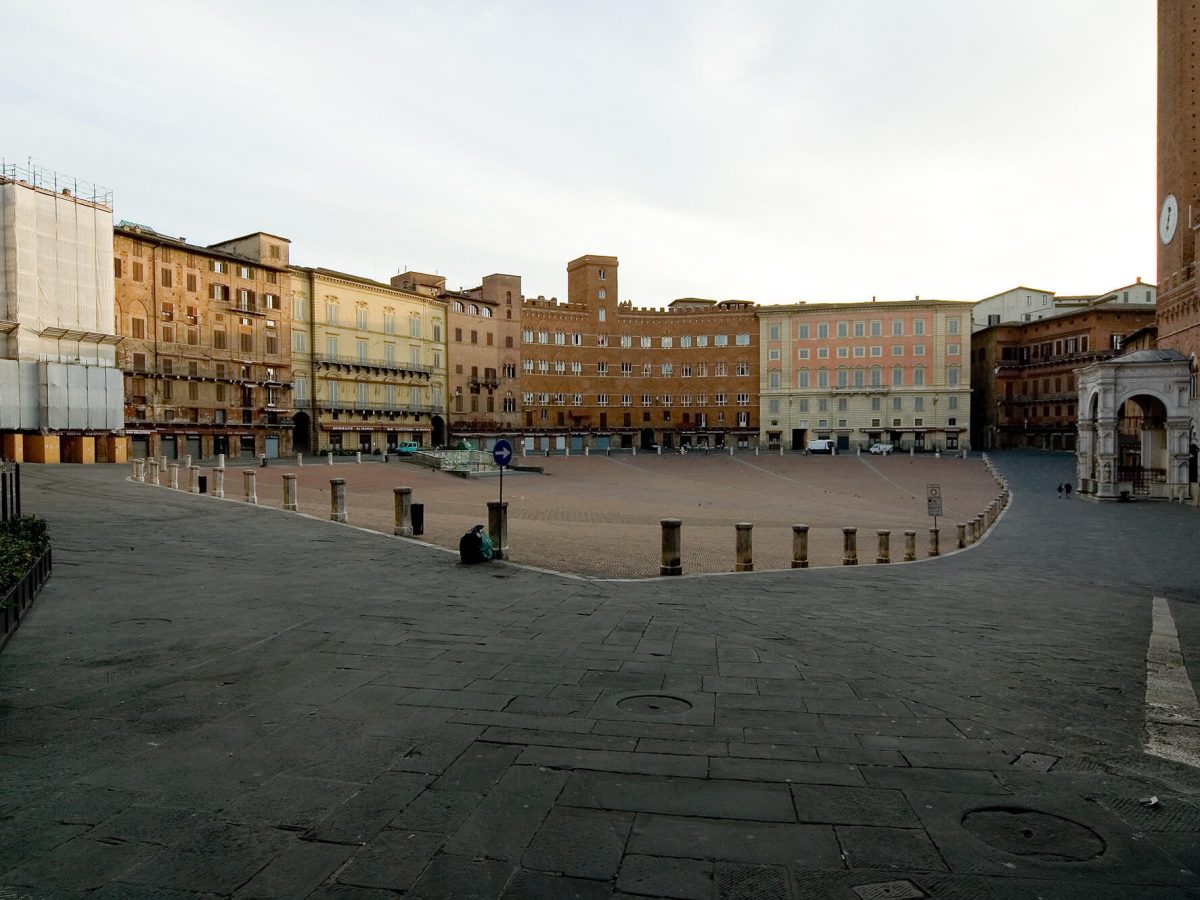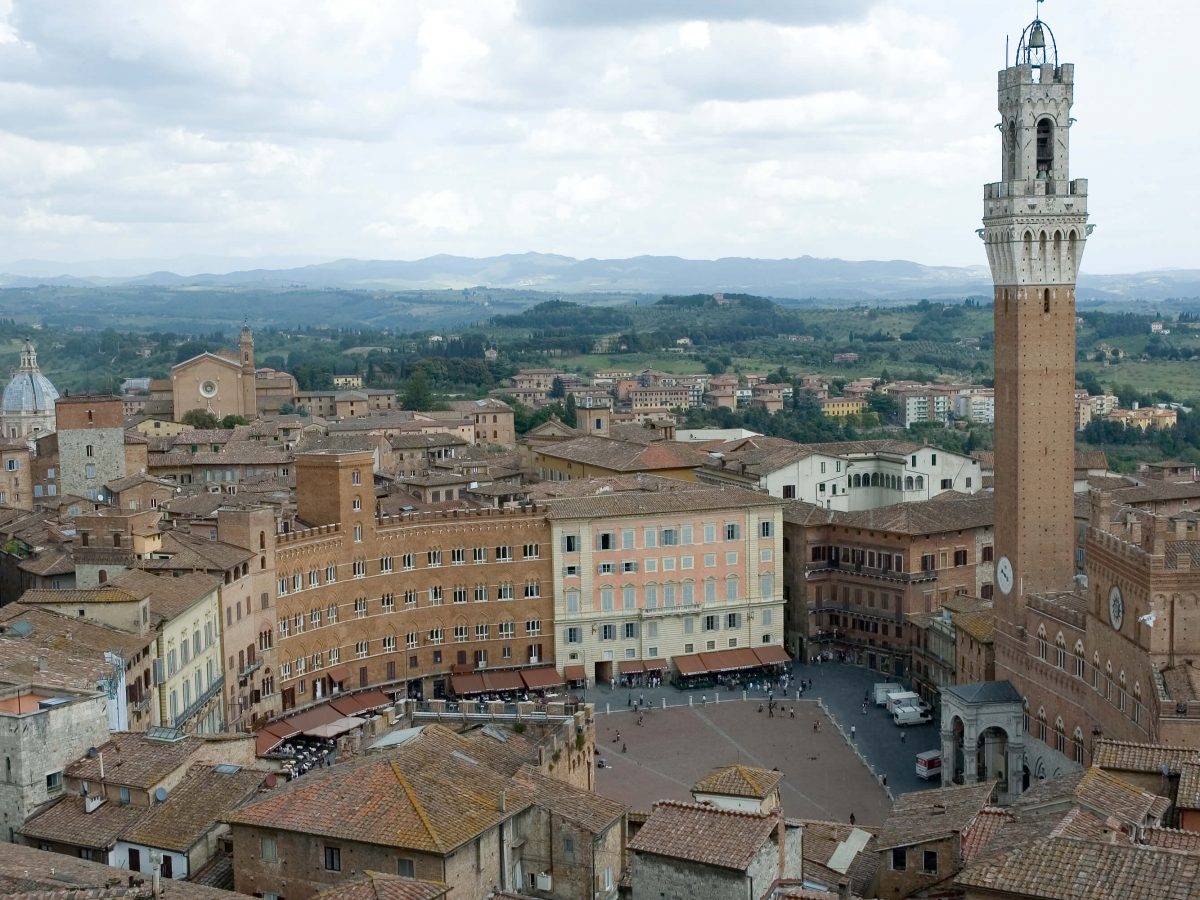The Historic Centre of Siena is the embodiment of a medieval city. Historically, its inhabitants pursued their competition with the neighbouring cities of Florence and Pisa right into the area of urban planning. Throughout the centuries, the city has preserved its Gothic appearance acquired between the 12th and 15th centuries. During this period, the work of Duccio, the Lorenzetti brothers and Simone Martini influenced the course of Italian and, more broadly, European art. The whole city of Siena was devised as a work of art that blends into the surrounding landscape.
This Tuscan city developed on three hills connected by three major streets forming a Y-shape and intersecting in a valley that became the Piazza del Campo. The seven-kilometre long fortified wall still surrounds the 170-hectare site. Protected gates were doubled at strategic points, such as the Porta Camollia on the road to Florence. To the west, the walls embrace the Fort of Santa Barbara that was rebuilt by the Medici in 1560 and finished in 1580. Inside the walls towerhouses, palaces, churches and other religious structures survive. Also of note are the city’s fountains that continue to be fed by an extensive system of original tunnels.
Siena’s distinctive Gothic style is illustrated by the quintessential Sienese arch, introduced to the city from the East during the Crusades. The arch dominated later building styles including the Renaissance era. Even when buildings underwent major renovations in the 17th, 18th and 19th centuries (such as the Town Hall, the Chigi-Saracini Palace, and the Marsili Palace respectively), Gothic elements had preference.
Siena is an outstanding medieval city that has preserved its character and quality to a remarkable degree. The city had substantial influence on art, architecture and town planning during the Middle Ages, both in Italy and elsewhere in Europe. The city is a masterwork of dedication and inventiveness in which the buildings have been designed to fit into the overall planned urban fabric and also to form a whole with the surrounding cultural landscape.


